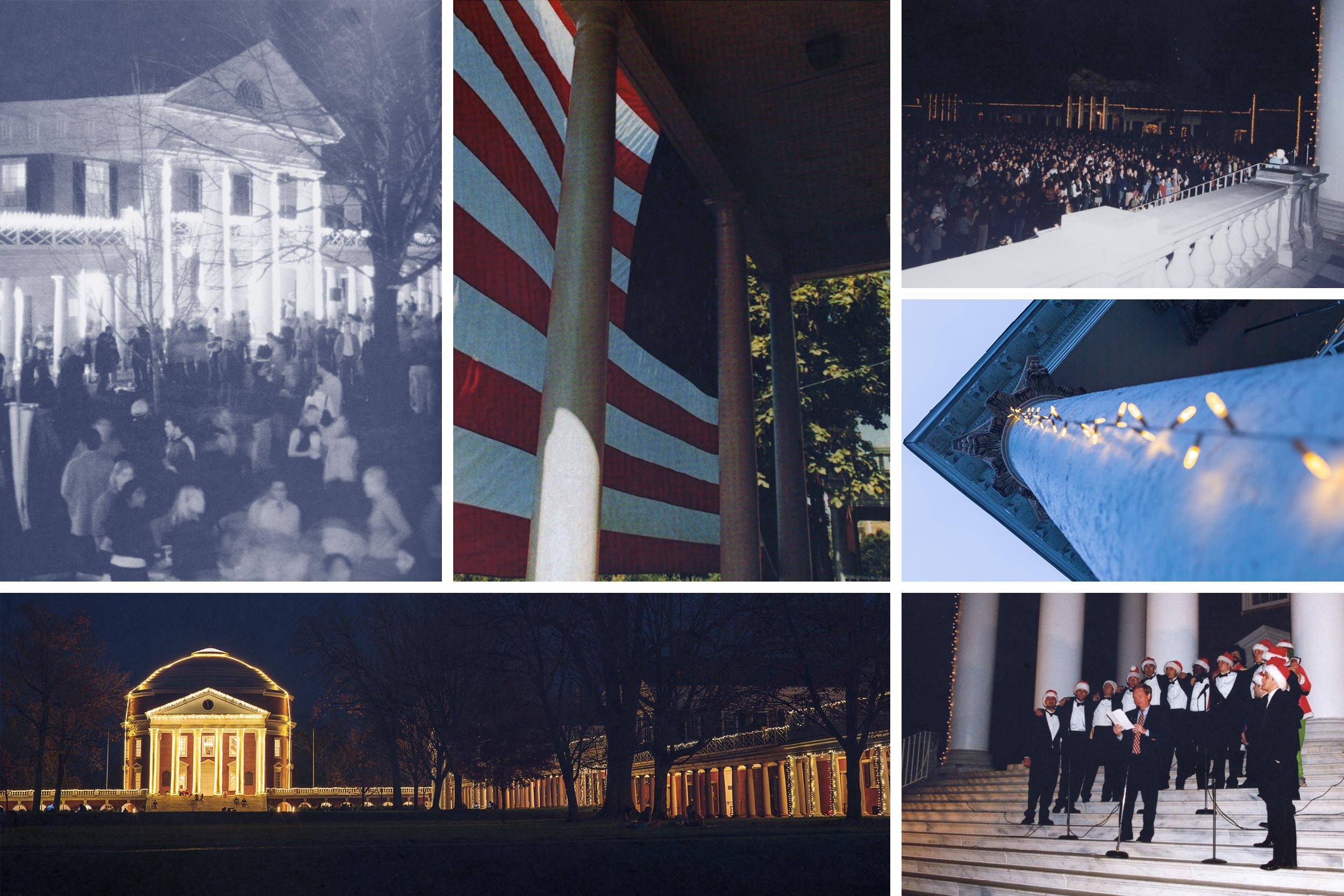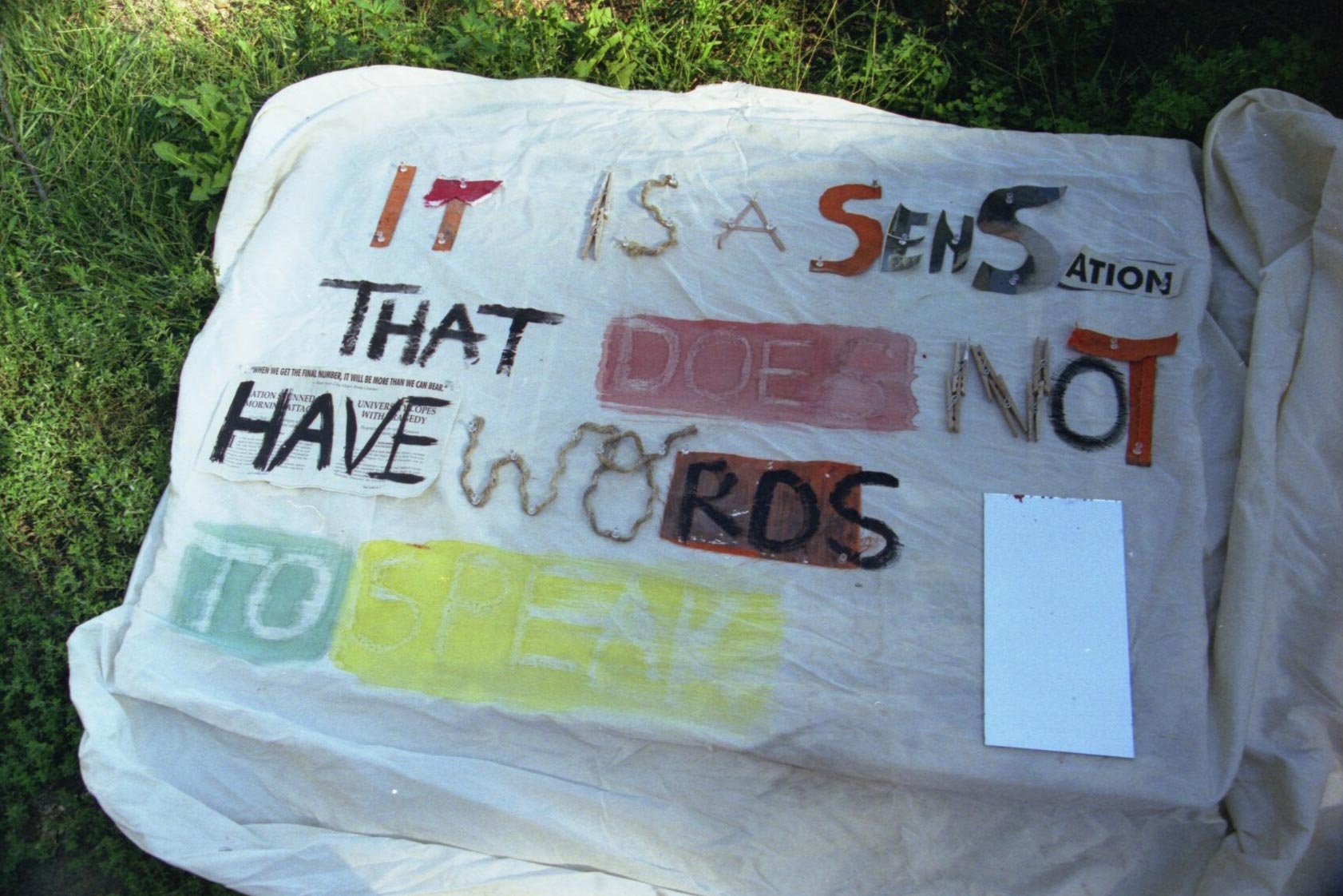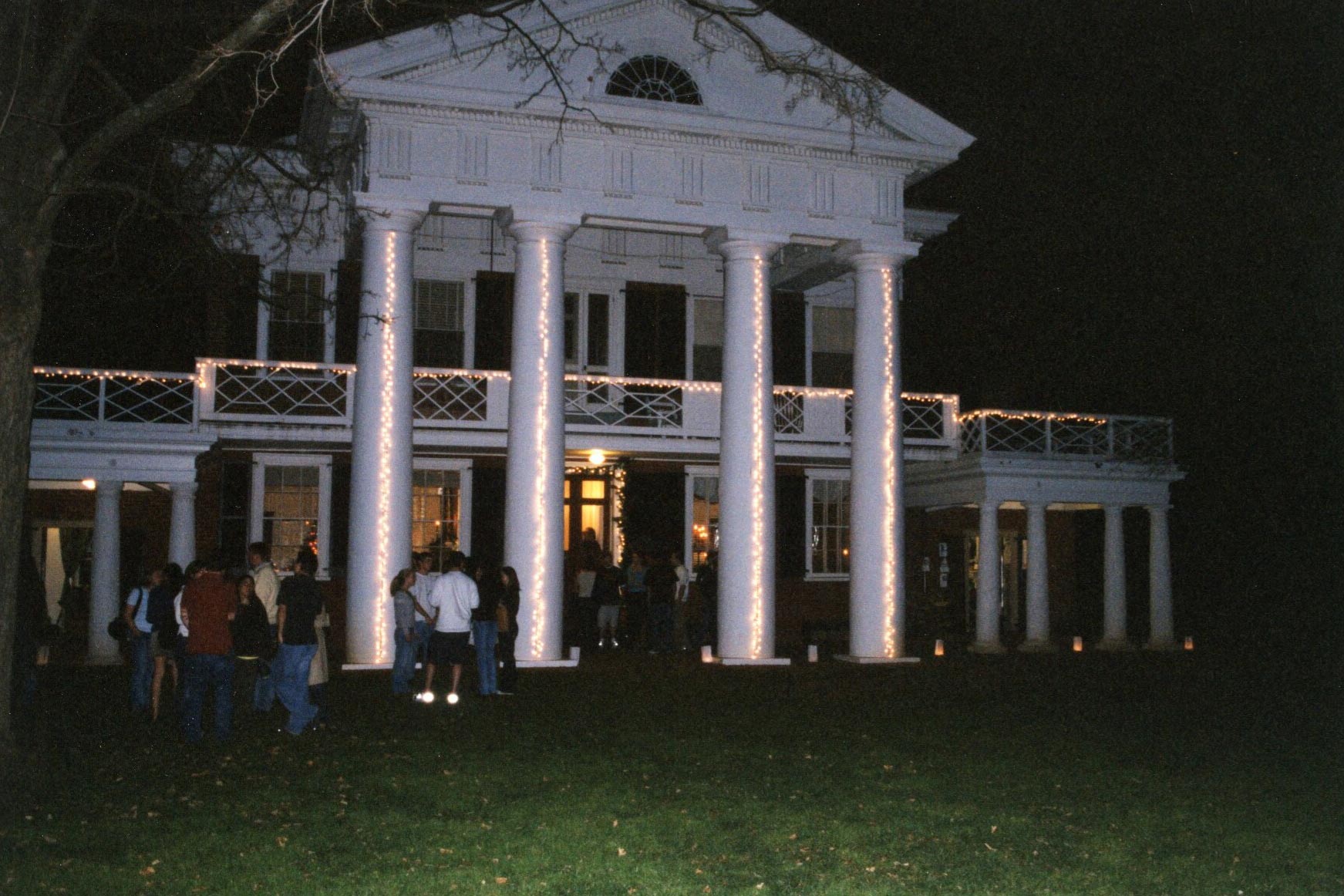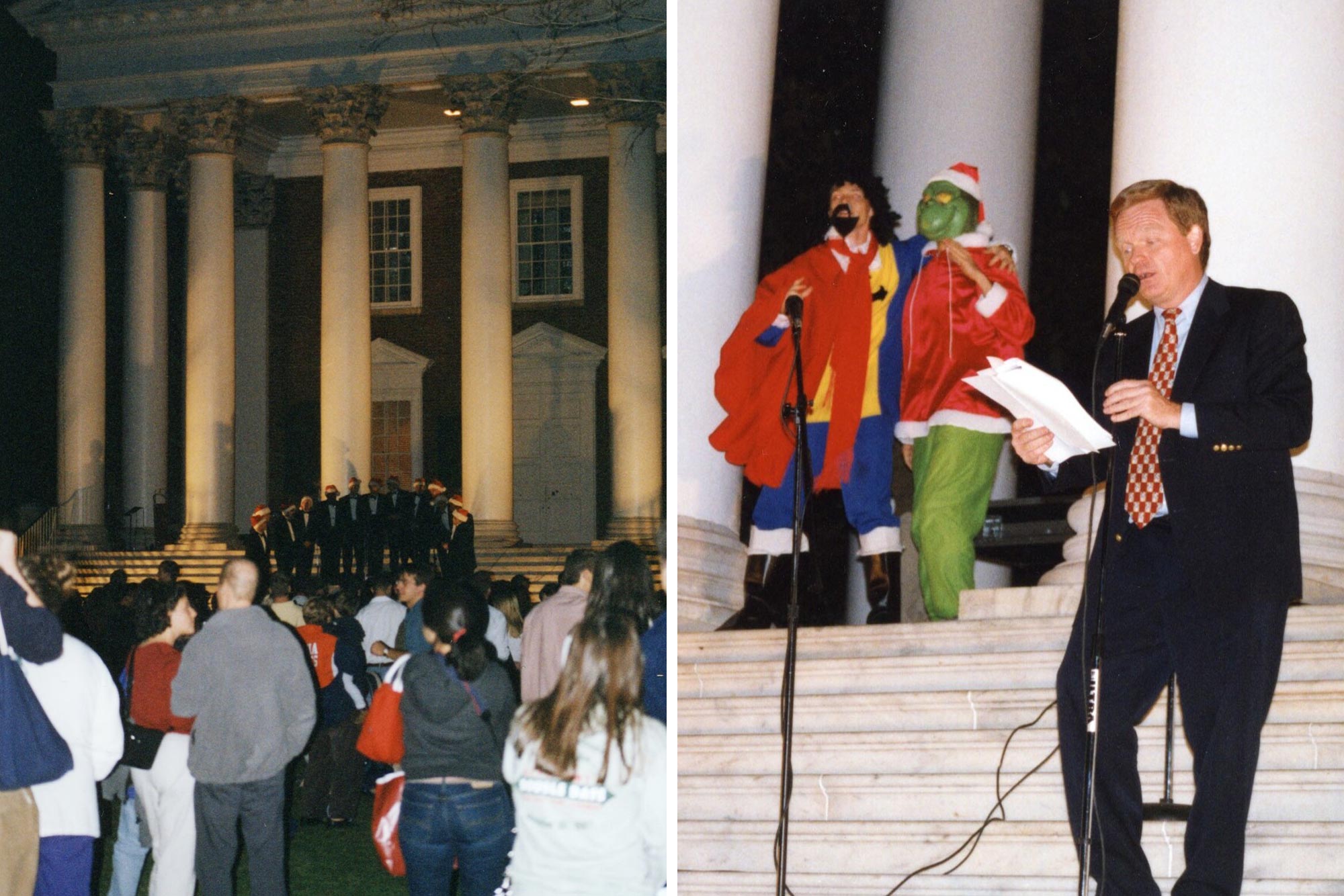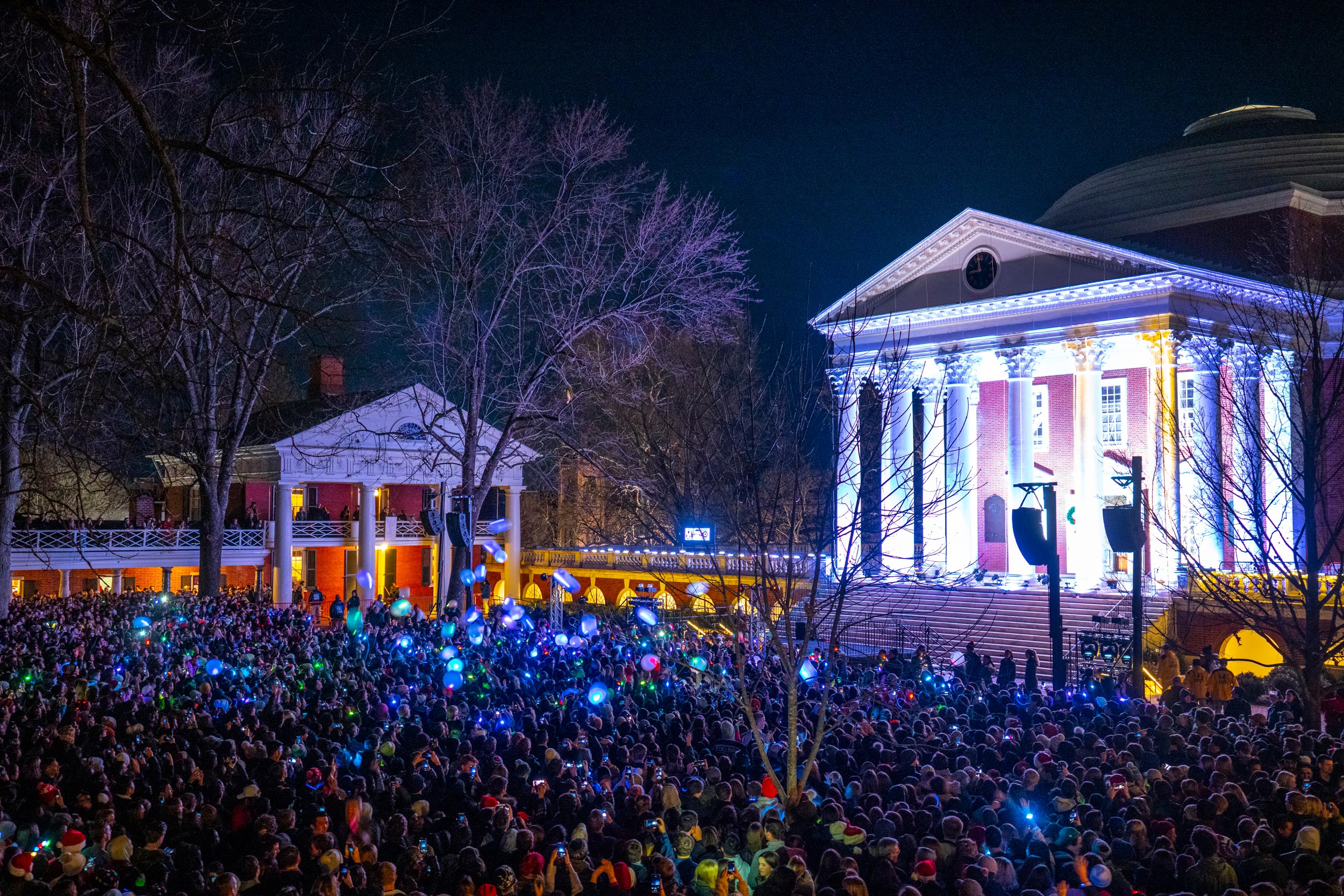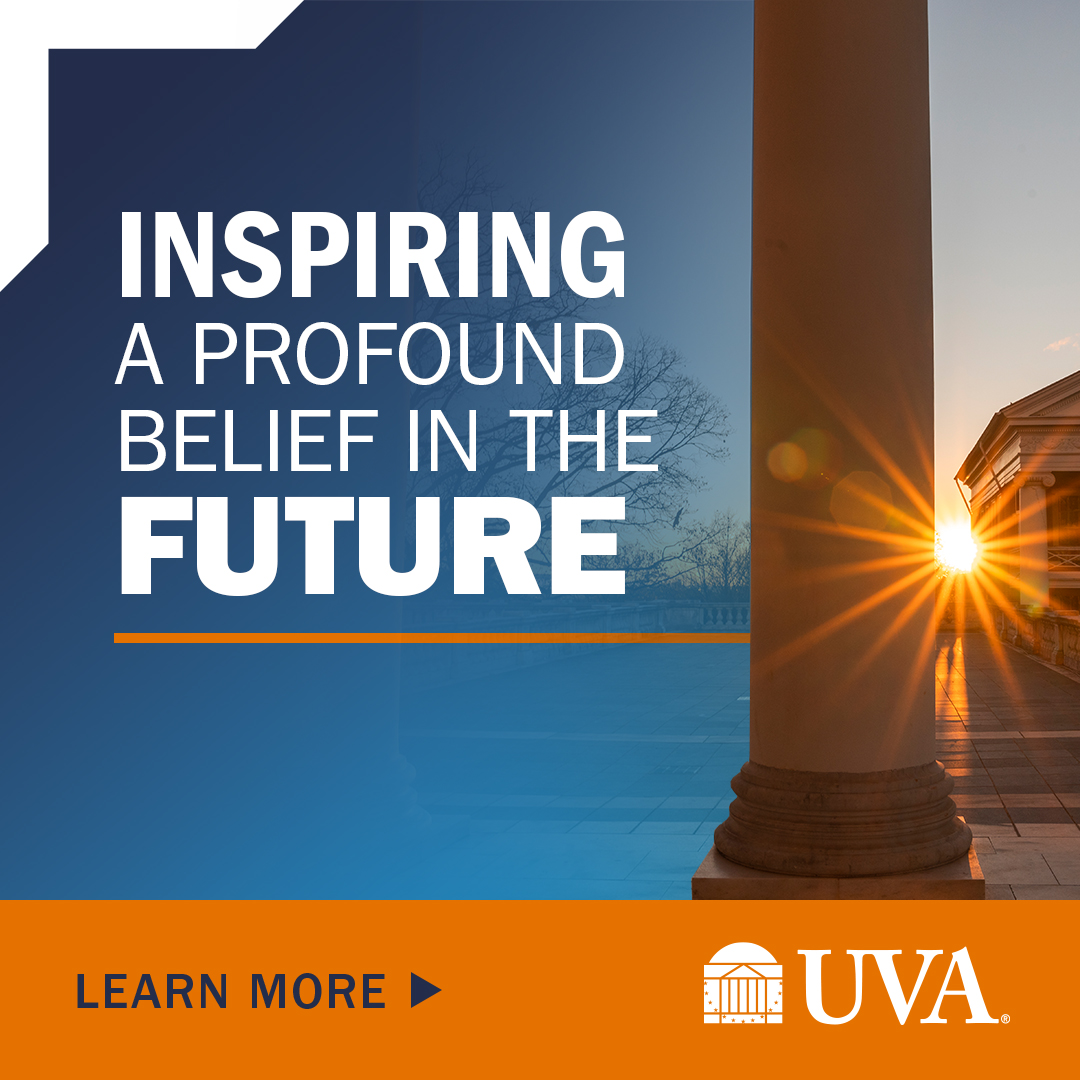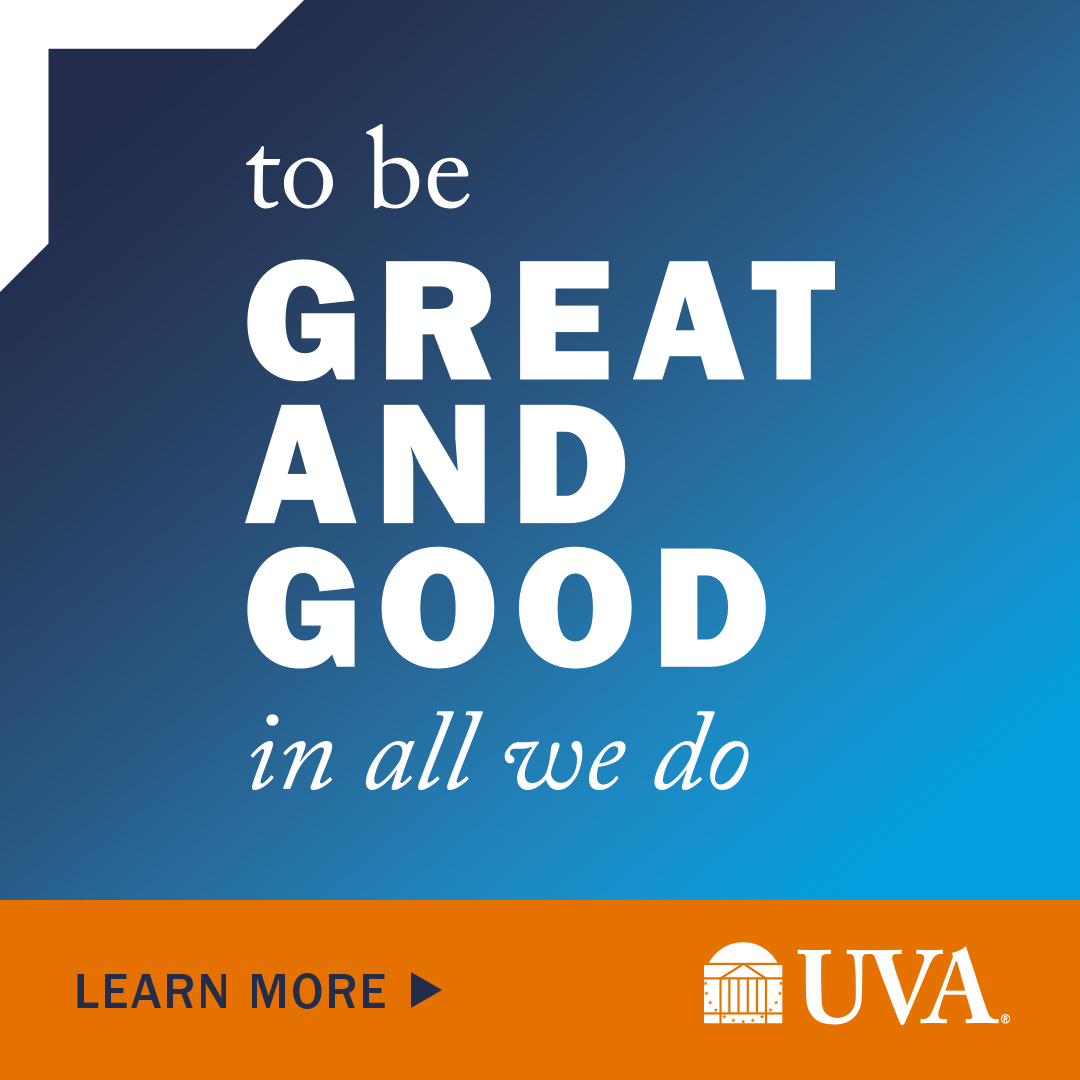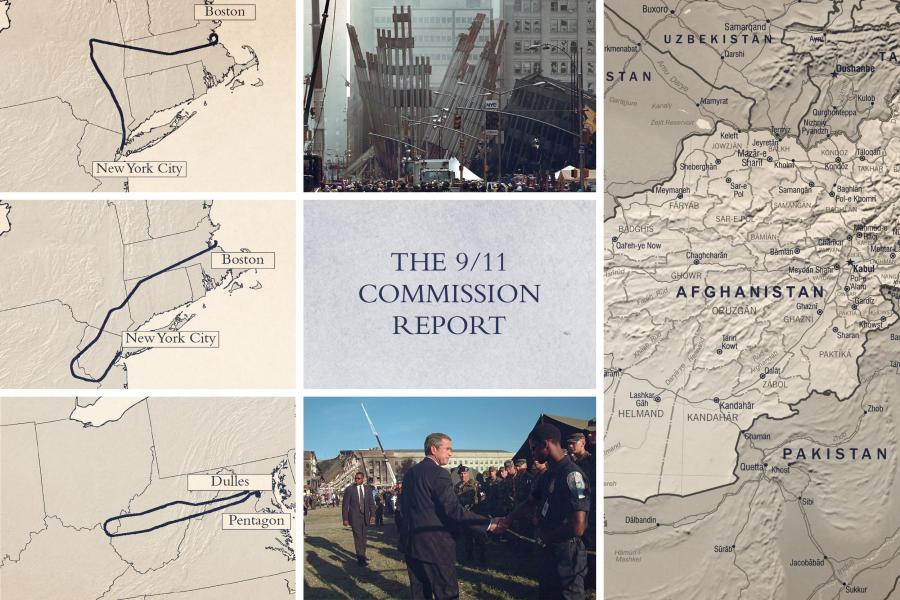Still, Lampkin made clear that the onus to plan and execute the event was fully in the students’ hands.
To string the lights, the students needed someone with expertise and an understanding of the necessary careful stewardship of UVA’s Academical Village, home to UVA’s Lawn. So, Wills’ team reached out to UVA’s Facilities Management division.
“Facilities was a joy to work with,” Wills said. “They just took it and ran with it.”
The First Year
“The general idea was to just have a faint outline of the rails above the Lawn student rooms as the horizontal lighting and then light the major columns of all the pavilions and then the columns of the Rotunda, along with the apex, the triangle at the top,” said Wayne Russell, an electrician in Facilities Management. “That’s how it was for a decade or longer and then, over time, we’ve done things with strobing lights choreographed to different music.”
The first year, Russell’s team used ladders and lifts to hang the lights, all incandescent bulbs locally sourced from Lowe’s and the now-closed Kmart store.
“Over time, we were able to do more with a ball and a string. We would have someone up top, toss it to them, they would walk around the column and toss it back down and then tie the string of lights and hoist them up that way.
“Back then we had three or four circuit breakers to provide enough power for the little incandescent Christmas tree-type ornamental lights,” Russell said. “Somewhere along the line, I believe it was Dominion Power [that] donated LED miniature lights, and the load is 10% of what it used to be. It used to be over 40 amps of power, and now it’s four.”
Electrician Randy Spencer was working on Russell’s team for the first Lighting of the Lawn and remembers the moment the Lawn was illuminated.
“The night of the event, we had multiple electricians stationed at different locations to just plug drop cords in. And then we heard the countdown and if I recall, at the end of their presentation, I think [the students called out] ‘Let there be light!,’ Spencer said. “When they said that, everybody simultaneously plugged their drop cord in, and we energized the lights and that was the first Lighting of the Lawn.”
What started out as a comparatively modest affair in 2001 has grown immensely over the years, with thousands of students and members of the community making it an annual part of their end-of-year celebrations. Games and food trucks have been added at the end of the Lawn near the Homer statue. (Last year’s Lighting of the Lawn was virtual due to the coronavirus.)
The first Lighting of the Lawn, on Dec. 15, 2001, featured some a cappella groups and the first reading of a now-annual poem, its cadence set to the poem, “T’was the Night Before Christmas.” That first poem was read by then-basketball coach Pete Gillen, who was very popular with students.
Former long-term Lawn resident Wayne Cozart, the recently retired executive director of the Jefferson Trust, estimates there were “fewer than 500 people who came that first time.”
“It was relatively quiet,” he said. “It really was folks coming and putting down blankets. Lawn residents pulled out their rocking chairs and had smaller events in their original rooms. None of the pavilions were open.”
This December, UVA students, with the help of Facilities Management, will host the 20th Lighting of the Lawn and recall its origin following the Sept. 11 terrorist attacks. Wills and West have left Charlottesville to raise families and work overseas. Luzar remains at UVA as director of student engagement with the UVA Alumni Association and has been advising the student trustees since 2005, working alongside them as they plan Lighting of the Lawn each year.
It’s hard to imagine a time when there wasn’t Lighting of the Lawn. But even in its infancy, Wills, Luzar and West had an inkling the event would become a beloved UVA tradition.
Virginia Magazine quoted Wills saying as much at that first Lighting of the Lawn.
“It’s been a tough semester and we wanted something that would unify everyone, a joyful ending that would cement everyone together,” he said. “People may … see it as a one-off, but I would love to see it institutionalized.”
